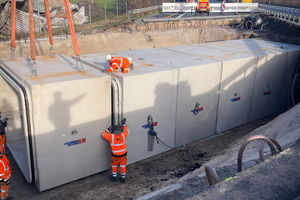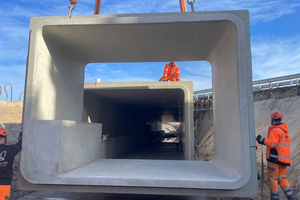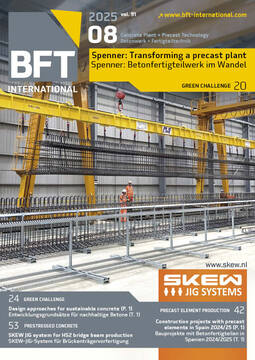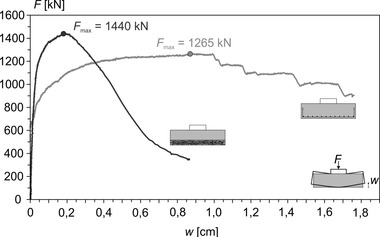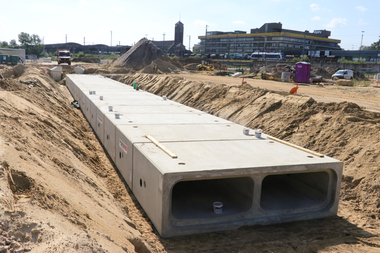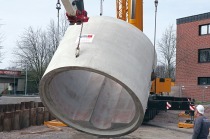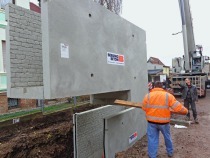Trench culvert renewal with precast reinforced concrete elements
Some 13,000 vehicles roll over the asphalt on working days on the German federal motorway A27 between its Nordholz and Altenwalde junctions, including around 1,000 trucks weighing over 3.5 tons. In March 2025, a construction project was completed on this route and caused traffic disruptions for several months. This situation, however, was unavoidable: it had become urgently necessary to replace a culvert for the Altenbruch Canal, built in 1978, under the A27. The culvert, made of corrugated steel sections, had rusted badly over the decades. It was therefore decided to replace the approx. 52-meter-long trench culvert. The project developer was Autobahn GmbH, an entity of the German federal government, which decided on an advanced structure made of precast reinforced concrete elements. The company Berding Beton was commissioned with the production. The company F. Winkler GmbH & Co. KG from Bremen performed the construction work.
To replace the old corrugated steel culvert, Berding Beton supplied a total of 21 precast reinforced concrete frame elements measuring 3.80 x 2.85 m with a weight of 31 tons each. Since traffic on the A27 was intended to continue to flow in one lane in each direction during construction work, an end-cover was installed in the frame, which made it possible to switch the work to the other direction without difficulty. The delivery scope also included two made-to-measure end frames with head beams to serve as inlet and outlet.
Equipped with an otter berm as a special feature
In production of the frames, another special feature had to be taken into account: they were to be equipped with an otter berm – a raised section in the culvert that allows otters – and other wild animals such as martens, foxes, mice, hares and beavers – to cross the culvert on dry ground. This artificial riparian zone, 60 cm wide and 100 cm high, is therefore not flooded at normal water levels. By using the berm, the animals can safely cross below the fast-moving traffic on the A27, which also reduces the risk of accidents for motorists.
While traffic was maintained, the concrete elements for replacing the culvert under the A27 were installed in three sections. Following diversion of the ditch water, the removal of the old corrugated steel culvert and construction of a reinforced concrete base as foundation for the new culvert elements, the first precast reinforced concrete elements were emplaced in the excavation pit by a large mobile crane. For transport, special lifting anchors were concreted into the precast concrete elements. Transport anchors with spherical heads were placed onto these elements for lifting and positioning. They were also effective for pulling the individual elements together with a pulley block, since the pulley block can be fixed to the transport anchor for this purpose. The all-around frame gasket required special force for pulling together the concrete elements.
Once the sewer had been successfully laid below the roadway, the base course was completed and the roadway newly asphalted in both traffic directions. Michael Wendt, spokesman for the Autobahn company, was very satisfied with the successful completion: “The processes were well-planned, the materials were delivered on time and the installation went smoothly.”
This was also confirmed by Site Manager Jens Stehmeier from contractor F. Winkler: “Successful completion of the project was primarily due to the professional collaboration and performance capabilities of all those involved. It was also of great advantage that the two Berding Beton staff members, Stefan Müller and Christian Waltersdorf, not only ensured the high quality of the material beforehand, but were also on site to supervise the installation. For us, this meant the best possible support and the opportunity to clarify questions quickly.” The entire project lasted from August 2024 to March 2025.

